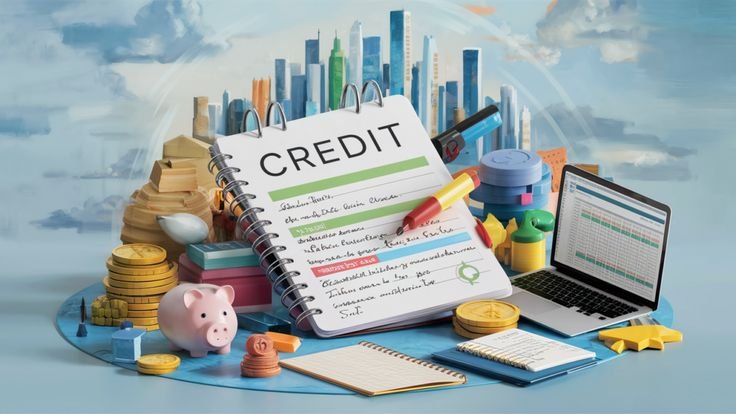
Credit scores that quantify a person’s creditworthiness in a number have been around for decades and have been the primary instrument by which lenders measure the risk from lending and set terms. However, studies and business patterns that arise today indicate a drastic change concerning the views and usage of credit scores. This shift focuses on the real impact on people’s financial lives rather than mere numbers. Herein lies the need for the analysis of this paper regarding changes and effects on lenders and borrowers.
Limitations of Traditional Credit Scores
Traditional credit scores, such as VantageScore and FICO, rely on many factors, including the type of account involved, use, age, payment history, and inquiry over the last period. While these are super-fast checks on creditworthiness, they have been highly criticized for several shortcomings:
Partial Financial View: Traditional scores often are not reflective of an individual’s finances at any given time. For instance, crucial factors in a report may not be included, such as recent developments in financial conditions or stable income accounts, in which a person with a short credit history who has recently acquired a better-paying job might end up on the unfair end.
The scores don’t provide much information to explain the presence of certain financial habits. For example, a short credit score dip from unexpected medical costs simply could not possibly reflect long-term financial stability or one’s ability to bounce back and manage one’s money well.
Negative Data: Negative comments on credit reports, such as late payment or collection, have a significant impact on a credit score. This would prove very difficult for those people who may have hit the bottom financially but somehow managed to turn their habits around.
New Credit Scoring Technologies
Recent studies and industry developments show a shift toward more sophisticated and comprehensive credit scoring techniques. The most significant factors that will shape the landscape regarding credit scores include:
Alternative Data Inclusion Data from alternative sources, such as utility bills, rental payment history, and subscription services, is increasingly included. Research done by the Consumer Financial Protection Bureau demonstrates the volume of accuracy that may be assigned to a person’s credit behavior by incorporating such data; for example, people who have an impeccable payment history of their rent may be rated as having higher creditworthiness if such information were included.
Evaluation of Financial Resilience: Such an assessment of financial resilience rather than just credit risk fascinates scholars and financial companies. According to a review by Harvard Business Review, financial resilience measures assess attributes such as emergency savings level, income volatility, and spending habits. This method gives more detailed and richer views of people’s lives in terms of the economy and how they deal with financial stress and recover from setbacks.
Thanks to developments in data analytics, far more granular credit assessments can be achieved today. A good number of lenders now employ algorithms based on vastly richer sets of financial behaviors and contextual information rather than simple reliance on standard credit scores. Customized credit scoring algorithms, as one would hear from McKinsey & Company analysis, can address specific circumstances and give a clearer view of an individual’s creditworthiness.
More Attention to Financial Inclusion: There is increased attention on financial inclusion. For instance, a Brookings Institution study reports that new credit scoring models are being developed considering individuals with little or no credit history, often dubbed the “credit invisible.” Such models try to make the financial system more inclusive for people who otherwise would be excluded by using non-traditional credit criteria and other data sources.
Implication of Credit Scores on Lenders and Consumers
The creation of credit scores has a crucial impact on lenders as well as consumers:
For Consumers:
Increased Access to Credit: The focus on financial strength and inclusion of non-traditional sources of data can make credit more accessible for those with a limited or adverse credit history. Youngsters, newcomers, and those unable to use the conventional scoring mechanism will be greatly benefited.
A better representation of consumers’ financial circumstances would mean fairer credit decisions and loan terms with other credit products.
Better Financial Awareness: The results from improved credit scoring evaluations might make individuals better aware of their respective financial situations and areas for improvement, which would lead to responsible financial behavior.
To lenders:
Reduced Risk: Lenders can better assess and make informed lending decisions because they use a more diverse array of data and focus on financial resiliency. The outcome may include better-performing loans and fewer defaults.
Expanded Customer Bank: Lenders are able to serve more consumers than traditional credit scoring approaches could because they use individualized assessments and alternative data to make lending decisions.
Improved Customer Relations: Sophisticated credit scoring techniques would make lenders more sensitive to customers, allowing them to offer loan solutions well suited to their specific financial needs.
Conclusion
The credit scoring industry has changed enormously from simple numerical values to complex documents that depict actual impact. Traditional credit scoring techniques that expand alternative data emphasize financial resilience and include personalization, which would benefit lenders and consumers more. This development opens the door to a more just and efficient financial environment by improving loan availability and encouraging better knowledge of financial wellness.

Leave a Reply